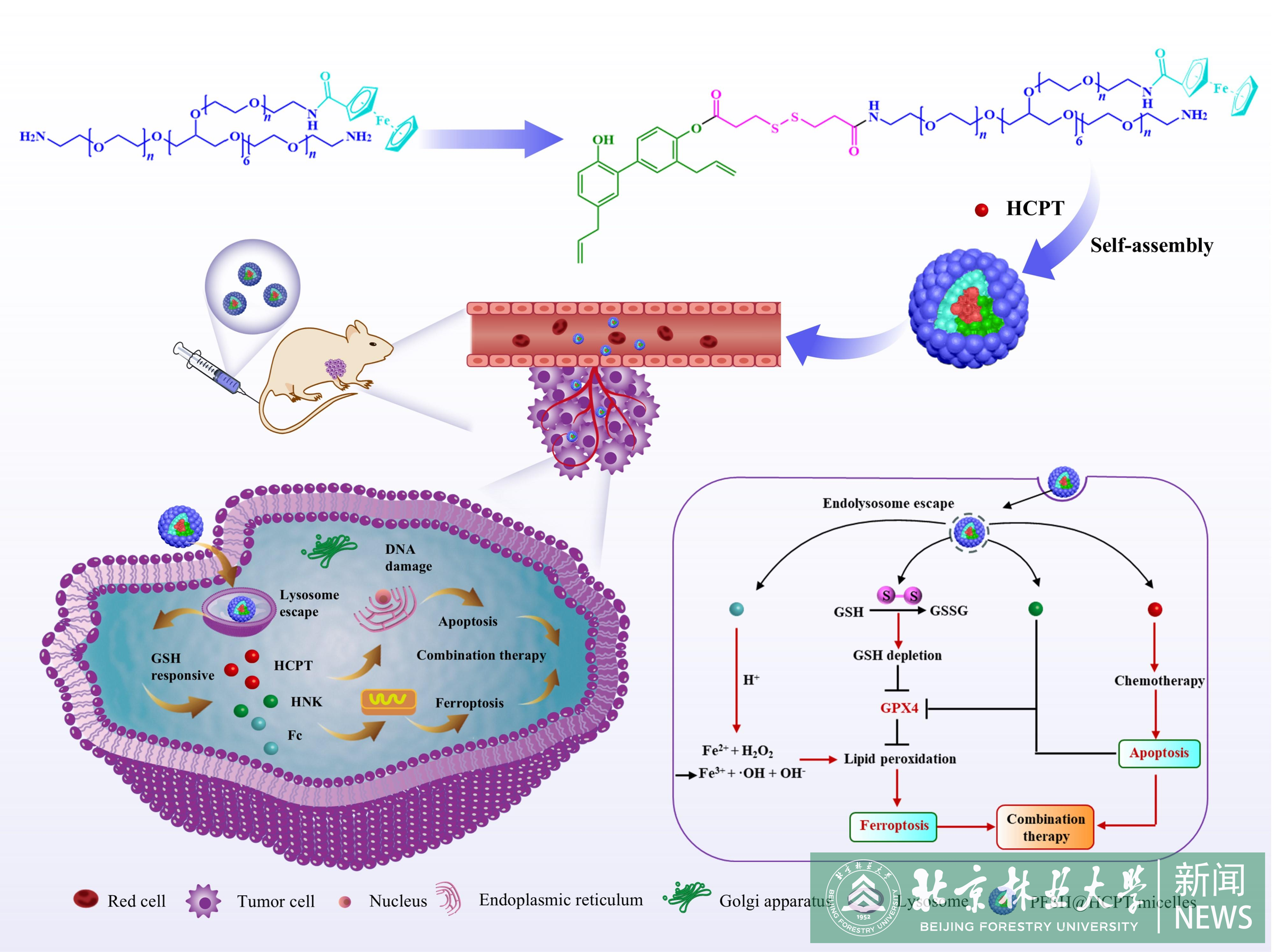Latest news
A research team led by Professor Lei Jiandu from College of Materials Science and Technology at Beijing Forestry University has achieved a significant breakthrough in natural drug delivery systems for cancer therapy. Their study, published in the top-tier journal Nano Research (IF=9.6), introduces an innovative nanomedicine platform that synergizes chemotherapy and ferroptosis to overcome drug resistance in colorectal cancer.
As the backbone of tumor therapy, chemotherapy is prone to tumor resistance due to its apoptotic pathway. Ferroptosis, as an effective form of non-apoptotic cell death, can overcome chemotherapy apoptosis-induced resistance. Therefore, the combination of chemotherapy and ferroptosis is a highly promising tumor treatment strategy. However, high glutathione (GSH) and insufficient intracellular iron content in the tumor environment limit the efficiency of ferroptosis-mediated anticancer. Not only that, simultaneous intracellular delivery of iron sources, ferroptosis inducers, and chemotherapeutic agents remains a major challenge.

Here, the research team constructed a self-assembled nano prodrug system to co-deliver iron sources, ferroptosis inducers, and anti-cancer drugs for combined ferroptosis and chemotherapy. In the tumor microenvironment, high levels of GSH triggered redox-responsive disulfide bonding, which induced the disassembly of this nano prodrug system (PFSH@HCPT), releasing hydroxycamptothecin (HCPT), honokiol (HNK) and ferrocene (Fc). HCPT induced cell death via apoptosis and Fc triggered the Fenton reaction, which induced ferroptosis. HNK inhibited the activity of glutathione peroxidase 4 (GPX4) to enhance ferroptosis, and on the other hand, it further induced cell death via apoptosis. Meanwhile, the combined strategy of HNK-mediated resistance and ferroptosis-induced resistance mechanism further overcame the resistance of HCPT and significantly improved the therapeutic efficacy. This nano prodrug system realized the “multi-machine integrated” therapeutic efficacy and showed great therapeutic potential, which may open up a new way for effective cancer treatment.
The corresponding author of this paper is Professor Lei Jiandu, with PhD candidates Zhang Limei and Zhu Huatai serving as co-first authors. Beijing Forestry University is the affiliated institution of the first author.The research is supported by the Fundamental Research Funds for Central Universities (PTYX202449)Fundamental Research Funds for the Central Universities.
Paper link: https://doi.org/10.26599/NR.2025.94907298.
Written by Zhang Limei, Lei Jiandu
Translated and edited by Song He
Reviewed by Yu Yangyang












